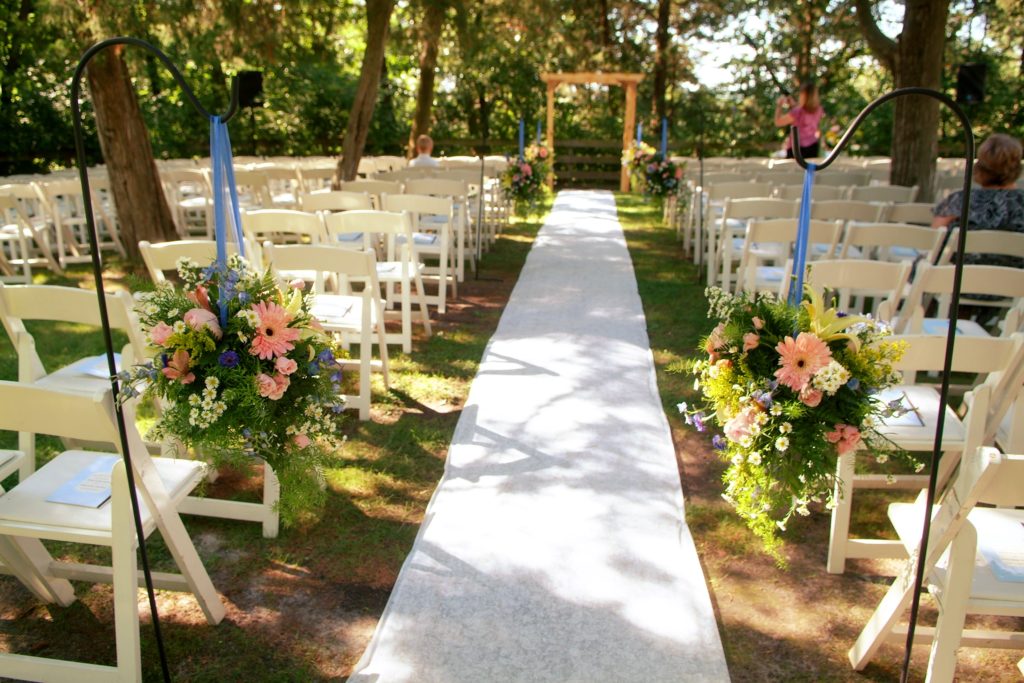
Here’s one location where an aisle runner might actually perform its intended function. Photo by Magical Moments Photography.
There’s one bit of wedding tradition that I usually recommend against, and that is the use of aisle runners. They are, fortunately, not as popular now as they were a few years ago, and I’m glad to see them go.
And what is so bad about them, you might ask? I find them to be terribly wasteful. The inexpensive ones that a florist typically supplies or that can be bought online are made from a non-woven synthetic fabric, such as polyester or polypropylene (both petroleum products). Needless to say, these runners anything but biodegradable. And they are a one-use item. After the wedding ceremony, the aisle runner will be thrown out. (I’ve personally thrown out more than one in my career.)
According to my colleague Lynn Fosbender of Pollen Floral Design, an aisle runner used to be a necessary item at a wedding before paved roads were found everywhere. The runner would be drawn down the aisle after the guests were seated to cover all the road dust so it wouldn’t soil the bride’s white gown. With that in mind, the only time a runner might still be useful would be at an outdoor wedding in a location where the aisle was bare dirt or rock.
If you find that a runner is necessary, or highly desirable, there are a few options for eco-friendly aisle runners. One possibility is to purchase a runner made from biodegradable materials, such as burlap, cotton canvas, or cotton duck. These tend to be more expensive than the disposable runners. Another option might be to find someone to make one for you out of a heavy, biodegradable material. This would definitely be more expensive!
Even if you can find (and afford) an aisle runner made from natural materials, the next question is what will become of it after the wedding ceremony. If you can re-sell it to someone who can use it, that would be one eco-friendly choice. Another possibility would be to re-purpose the fabric, if it is clean enough to use. (You could make a lot of throw pillows out of 75 feet of cotton duck!)
But it seems to me that there are very limited options in this realm of wedding paraphernalia. It isn’t easy to find an eco-friendly runner in the first place, and there are few things to do with it afterwards. All that is why I say, “Skip the aisle runner.” It’s a choice that is easy on your budget–and no one will miss it.

Recent Comments